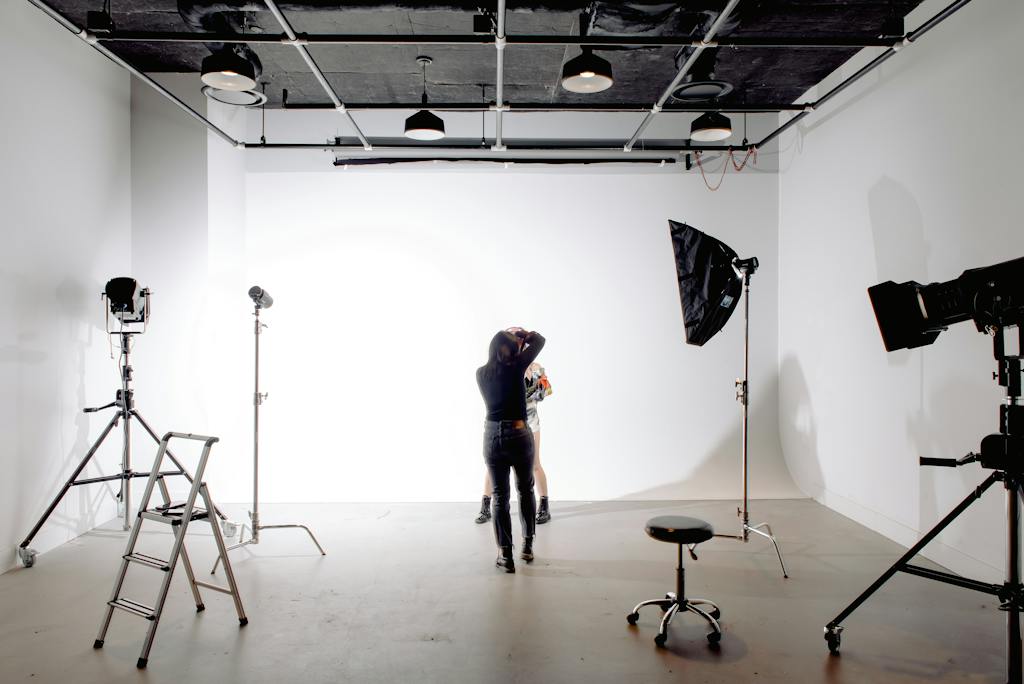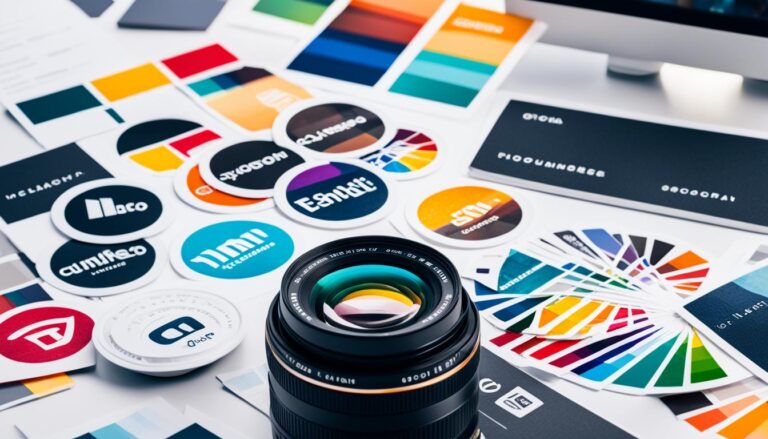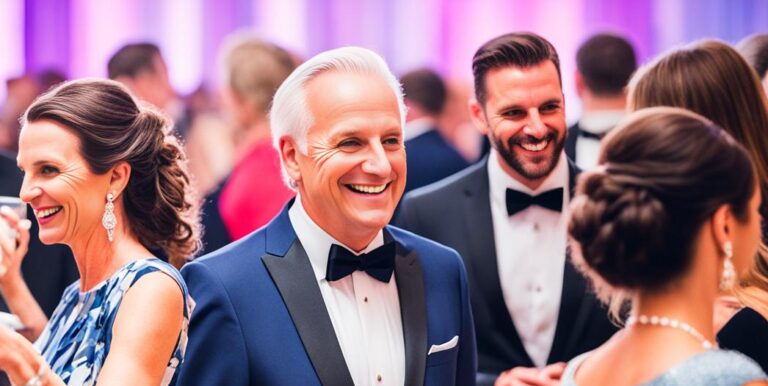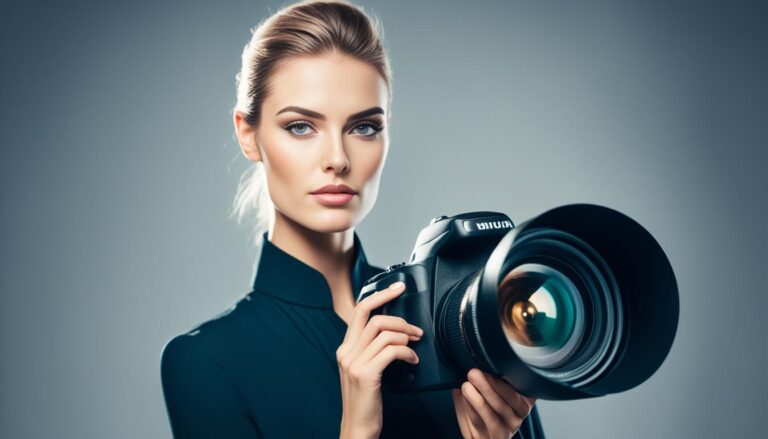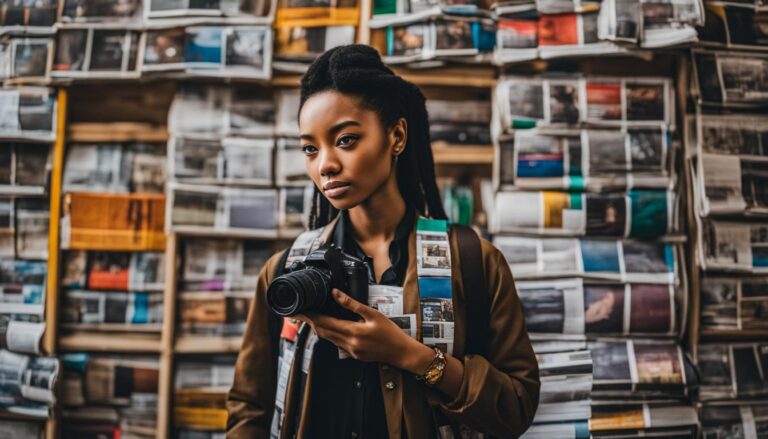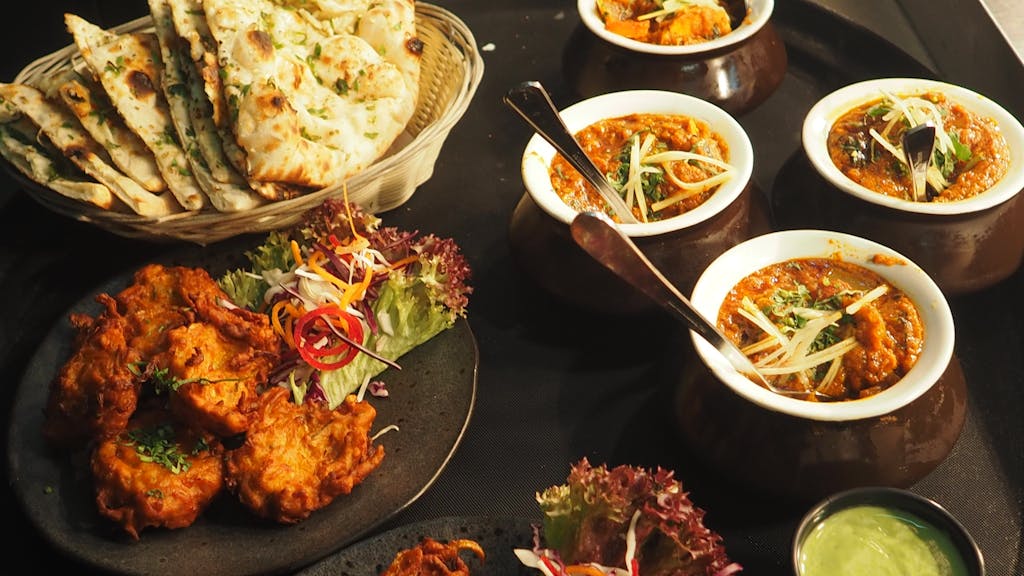How to Become a Lifestyle Photographer
Have you ever found yourself captivated by a photograph? That one image that evokes a sense of joy, wonder, or nostalgia? It’s a feeling that connects us to the world around us, reminding us of the beauty in everyday moments. As photographers, we can capture and preserve these meaningful experiences forever.
If you have a passion for photography and a desire to create art that tells stories, then becoming a lifestyle photographer may be the perfect path for you. Lifestyle photography is an incredible genre that allows you to capture real-life events and candid moments creatively and artistically. It’s about celebrating the beauty of everyday life and showcasing the genuine emotions and connections that unfold before your lens.
This comprehensive guide will walk you through becoming a lifestyle photographer. From cultivating your photography skills to building a portfolio and starting your own photography business, we will provide the knowledge and tools to turn your passion into a profession.
Key Takeaways:
- Discover the transformative power of lifestyle photography
- Understand the role and responsibilities of a lifestyle photographer
- Cultivate your photography skills through formal education or self-learning
- Build a professional portfolio that showcases your unique style and vision
- Embark on your entrepreneurial journey and start your own photography business
Understanding the Role of a Lifestyle Photographer
In this section, we will delve into the role of a lifestyle photographer within the fashion industry. We will explore the definition of lifestyle photography, its importance in showcasing fashion in everyday settings, and the art of capturing real-life events and candid moments. Additionally, we will discuss the planning, prepping, and execution process of successful lifestyle photoshoots.
Defining Lifestyle Photography within the Fashion Industry
Lifestyle photography is a genre within the fashion industry that focuses on capturing authentic moments and real-life events. It tells a story through images, showcasing fashion in everyday settings and connecting the viewer and the subject. Lifestyle photographers aim to capture the essence of the human experience, portraying individuals in a natural and relatable way.
The Art of Capturing Real-Life Events and Candid Moments
Capturing real-life events and candid moments is at the heart of lifestyle photography. It involves observing and documenting genuine emotions, interactions, and experiences. Lifestyle photographers have a keen eye for detail and are skilled in capturing fleeting moments that reflect the essence of a person or a scene. These candid shots add depth and authenticity to a photo shoot, creating a sense of connection and relatability for the audience.
Planning, Prepping and Executing Successful Photoshoots
Successful lifestyle photoshoots require careful planning, preparation, and execution. Lifestyle photographers work closely with clients and creative teams to conceptualize and bring their vision to life. They scout locations, coordinate outfits, and ensure the overall aesthetic aligns with the brand’s image. During the shoot, photographers guide and direct the subjects, capturing them in their natural element and creating a relaxed and comfortable atmosphere. Skilful editing and post-production techniques are then applied to enhance the final images, ensuring they align with the desired style and mood.

| Lifestyle Photographer Role | Lifestyle Photography | Real-Life Events | Candid Moments | Successful Photoshoots |
|---|---|---|---|---|
| Focuses on capturing authentic moments and real-life events | A genre within fashion photography that showcases fashion in everyday settings | Capturing genuine emotions and interactions in real-life situations | Photographing spontaneous and unposed moments | Require careful planning, preparation, and execution |
| Tells a story through images and creates a connection with the audience | Reflects the essence of the human experience | Adding depth and authenticity to the photo shoot | Creating a sense of relatability and connection | Working closely with clients and creative teams |
| Scouts locations, coordinate outfits and ensures aesthetic alignment | Enhances the overall brand image | Guiding and directing subjects during the photoshoot | Creating a relaxed and comfortable atmosphere | Applying skilful editing and post-production techniques |
The Path to Professional Lifestyle Photography
Becoming a professional lifestyle photographer requires a clear understanding of the career path and the necessary steps. In this section, we will discuss how to embark on your photography journey, from gaining knowledge and skills through formal education or self-learning to building a portfolio that reflects your unique photography style and vision.
If you’re passionate about photography and aspire to make a career out of it, you have already taken the first step towards becoming a professional lifestyle photographer. The photography journey is exciting and fulfilling, filled with creativity, exploration, and continuous learning.
Formal Education vs. Self-Learning: You may choose between formal education or self-learning when starting your photography journey. Formal education, such as enrolling in a photography course or pursuing a degree in photography, can provide a structured curriculum and mentorship opportunities. On the other hand, self-learning allows you to explore at your own pace, experimenting with different techniques and styles.
“Photography is a journey, not a destination. It’s about continuously evolving and honing your skills to capture the essence of life through your lens.” – Ansel Adams
Building Your Skillset: Regardless of your chosen path, acquiring a strong foundation in photography techniques, lighting, composition, and post-processing is crucial. Invest time in practising and experimenting with different genres of photography. Take every opportunity to develop your skills, whether it’s capturing everyday moments or collaborating with models and stylists for fashion shoots.
Developing Your Style: As you progress on your photography journey, focus on developing your unique style. Take inspiration from established photographers, explore different genres, and experiment with various editing techniques to find your artistic voice. Your style should reflect your personality and vision, allowing you to stand out in the competitive world of professional lifestyle photography.
Building Your Portfolio: A well-curated portfolio is essential for showcasing your talent and attracting clients. Select your best work, ensuring a diverse range of images highlighting your versatility and skills. Be intentional in curating your portfolio to create a cohesive visual narrative representing your style and artistic vision.
Building a successful career in professional lifestyle photography takes time, dedication, and perseverance. It’s a journey of continuous growth and learning, where every photoshoot and project contributes to your skillset and portfolio. Embrace the challenges, seek feedback, and stay true to your passion for capturing life’s moments through your lens.
How to Cultivate Your Skills for Capturing Candid Shots
Capturing candid shots is a key aspect of lifestyle photography. It allows you to capture genuine and natural moments that tell a story and evoke emotion. In this section, we will explore the techniques and approaches to master the art of candid photography. We will also discuss the importance of keeping your camera ready to capture spontaneous moments, ensuring you don’t miss any opportunities to capture authentic and impactful images.
Mastering the Art of the Candid: Techniques and Approaches
Mastering the art of capturing candid shots requires combining technical skills and a keen eye for detail. Here are some techniques and approaches you can use to improve your candid photography:
- Blend in: To capture candid shots, it’s important to blend in with your surroundings and become an invisible observer. Dress appropriately and be mindful of your presence to avoid drawing attention.
- Use a telephoto lens: A telephoto lens allows you to capture candid shots from a distance without disturbing the subject. This lens will allow you to capture intimate moments without intruding on the scene.
- Shoot in burst mode: Enable burst mode on your camera to quickly capture a series of shots. This will increase your chances of capturing the perfect candid moment, especially if movement is involved.
- Anticipate the action: Pay attention to the environment and anticipate when interesting moments may occur. This could be during a speech, a laugh, or a meaningful interaction. Being ready to capture these moments will help you capture authentic and spontaneous shots.
- Experiment with different angles: Get creative with your composition and try different angles to add variety to your candid shots. Shooting from a low angle or unconventional framing can create unique and compelling images.
Keeping Your Camera Ready for Spontaneous Moments
One of the challenges in capturing candid shots is being prepared for spontaneous moments. Here are some tips to ensure your camera is always ready:
- Keep your gear accessible: Have your camera and necessary lenses within easy reach, so you can quickly grab them when a candid moment unfolds.
- Set your camera settings in advance: Avoid missing the moment by setting your camera to the appropriate settings before you start shooting. Adjust your ISO, aperture, and shutter speed based on the lighting conditions.
- Silence your camera: Disable any unnecessary sounds or beeps that could draw attention to your camera. Set your camera to silent mode or turn off camera sounds to maintain discretion.
- Keep spare batteries and memory cards: Always carry extra batteries and memory cards to ensure you don’t run out of power or storage space when capturing candid shots.
- Practice patience: Candid moments can be unpredictable, so be patient and prepared to wait for the right opportunity. Patience is key when it comes to capturing authentic and impactful candid shots.
By implementing these techniques and staying camera-ready, you can cultivate your photography skills and capture compelling candid shots that tell a story and resonate with your audience.

Gearing Up: Choosing the Right Equipment for Lifestyle Shoots
Selecting the right equipment is critical for achieving success in lifestyle photography. The gear you choose can greatly impact the quality of your images and the overall outcome of your shoots. This section will delve into the different types of equipment and gear commonly used in lifestyle photography. We will explore the factors you should consider when selecting the right camera, lenses, and accessories to capture stunning lifestyle images.
“Having the right equipment allows us to unleash our creativity and capture the essence of everyday life in a captivating and visually appealing way.”
Let’s start with the most essential piece of equipment: the camera. When choosing a camera, it is important to consider factors such as image quality, versatility, and ease of use. Many lifestyle photographers opt for DSLR or mirrorless cameras, as they offer a wide range of customizable settings, interchangeable lenses, and advanced features that allow for greater creative control and flexibility.
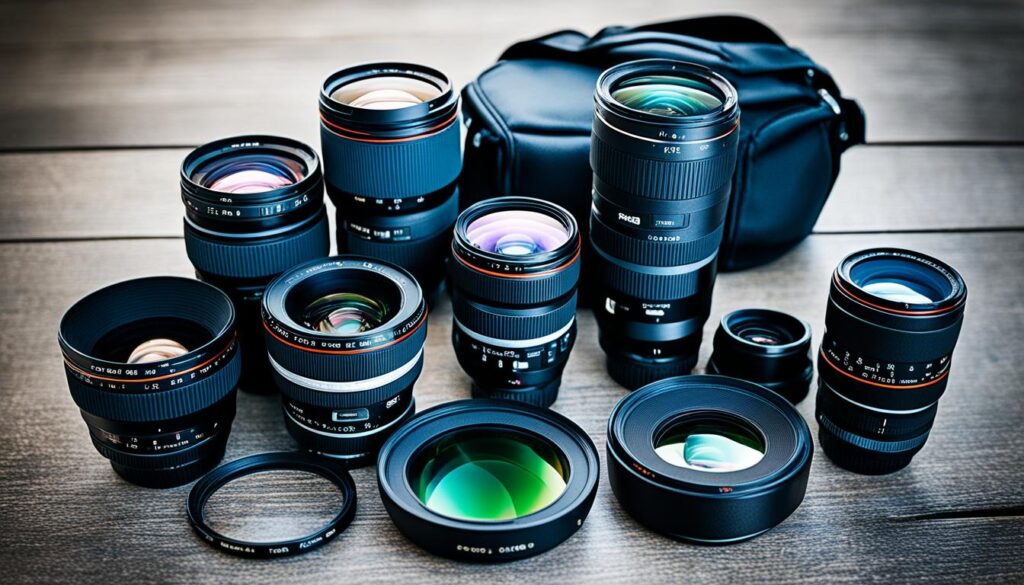
Next, let’s move on to lenses. The choice of lenses can significantly impact the style and composition of your photographs. For lifestyle photography, it is ideal to have a versatile lens that covers a range of focal lengths. A popular option is a 24-70mm lens, which provides a wide-angle perspective for capturing environmental shots and a telephoto effect for close-up portraits.
In addition to the camera and lenses, other accessories can enhance your lifestyle shoots. A sturdy tripod ensures stability and avoids camera shake, especially when shooting in low light or capturing long-exposure images. A flash or external lighting setup can also be beneficial for illuminating subjects and adding creative lighting effects to your photographs.
When choosing your equipment, it is important to consider your specific shooting style and preferences. Take the time to research and test various options, read reviews, and seek advice from experienced photographers. Remember, the gear you choose should complement your vision and allow you to capture the unique moments and emotions that define lifestyle photography.
| Essential Equipment for Lifestyle Photography | |
|---|---|
| Camera | DSLR or mirrorless camera with customizable settings and interchangeable lenses |
| Lenses | A versatile lens such as 24-70mm for wide-angle and telephoto perspectives |
| Tripod | Sturdy tripod for stability and avoiding camera shake |
| Flash/External Lighting | Used for illuminating subjects and adding creative lighting effects |
Developing Your Unique Style: Building a Portfolio that Speaks Volumes
Developing a unique style is crucial for standing out as a lifestyle photographer. It allows you to differentiate yourself from others in the industry and showcase your artistic vision. When building your portfolio, it’s essential to curate your best work to make a strong impact on potential clients and viewers. This section explores developing your unique style and building a portfolio that effectively communicates your skills and artistic perspective.
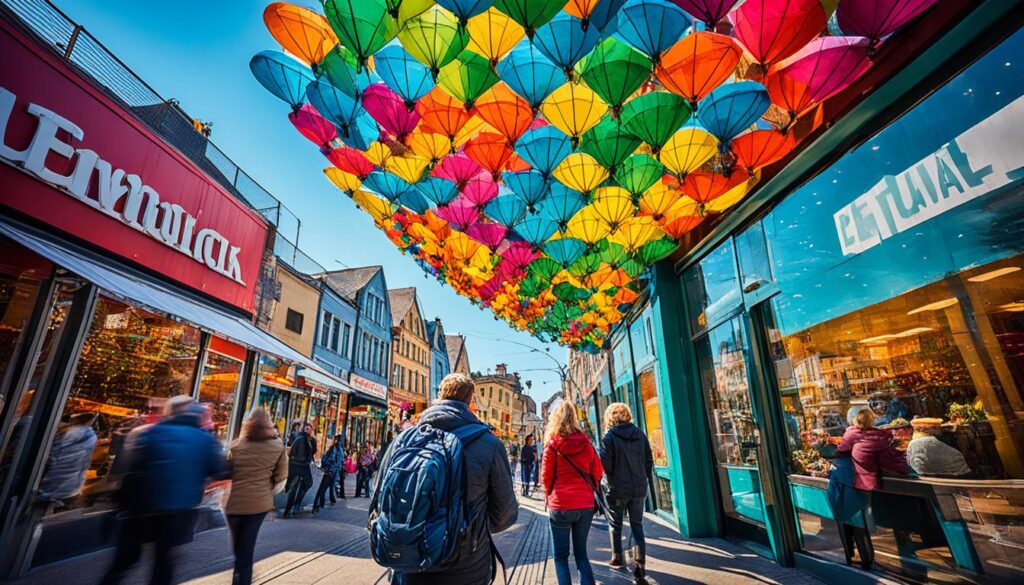
Curating Your Best Work for Maximum Impact
Curating your best work is carefully selecting and presenting images highlighting your strengths as a lifestyle photographer. Quality over quantity is key in creating a portfolio that leaves a lasting impression. Consider the following tips when curating your portfolio:
- Choose images that align with your unique photography style and vision.
- Showcase a variety of subjects and settings to demonstrate your versatility.
- Ensure technical excellence in terms of composition, lighting, and post-processing.
- Consider the flow and narrative of your portfolio, arranging the images in a logical and visually appealing order.
- Regularly update your portfolio with fresh and relevant work to keep it current and engaging.
Remember, your portfolio is your visual representation of your talent and creativity. Make sure it reflects your best work and speaks to your target audience.
Learning the Importance of Client-Photographer Relationship
The relationship between photographers and their clients is crucial for success in the industry. Developing strong connections with your clients fosters trust and mutual understanding, leading to better collaboration and more satisfying results. Here are some key aspects to consider in building a strong client-photographer relationship:
- Listen to your clients’ needs and expectations, ensuring you understand their vision.
- Communicate openly and transparently, keeping clients informed throughout the process.
- Offer guidance and suggestions while respecting the clients’ preferences and desires.
- Provide exceptional customer service, going above and beyond to exceed expectations.
- Establish a professional yet friendly demeanour, making clients feel comfortable and valued.
Investing time and effort into building a strong client-photographer relationship leads to satisfied clients and increases the likelihood of repeat business and positive referrals.
| Client-Photographer Relationship | Benefits |
|---|---|
| Trust and Communication | Establishes a strong foundation for collaboration and understanding. |
| Client Satisfaction | Delivers images that meet or exceed clients’ expectations. |
| Repeat Business | Increases the likelihood of clients hiring you for future projects. |
| Positive Referrals | Generates word-of-mouth recommendations, expanding your client base. |
Market Yourself: Starting a Lifestyle Photography Business
If you aspire to start your lifestyle photography business, we are here to guide you. From legal considerations and business planning to marketing strategies and establishing an online presence, we will explore the essential steps to kick-starting your entrepreneurial journey in the photography industry.
Starting a photography business requires careful planning and strategic thinking. First, you need to decide on the legal structure of your business. Will you operate as a sole proprietorship or form a limited company? It’s important to consult a legal professional to understand each option’s implications.
Once you have established the legal framework, it’s time to develop a comprehensive business plan. This plan will outline your vision, goals, target market, and financial projections. It will serve as a roadmap for your photography business and provide a clear direction for growth and success.
Marketing yourself and your photography services is crucial for attracting clients and building a strong brand presence. Utilize online platforms such as social media, your website, and online directories to showcase your portfolio and engage with your target audience.
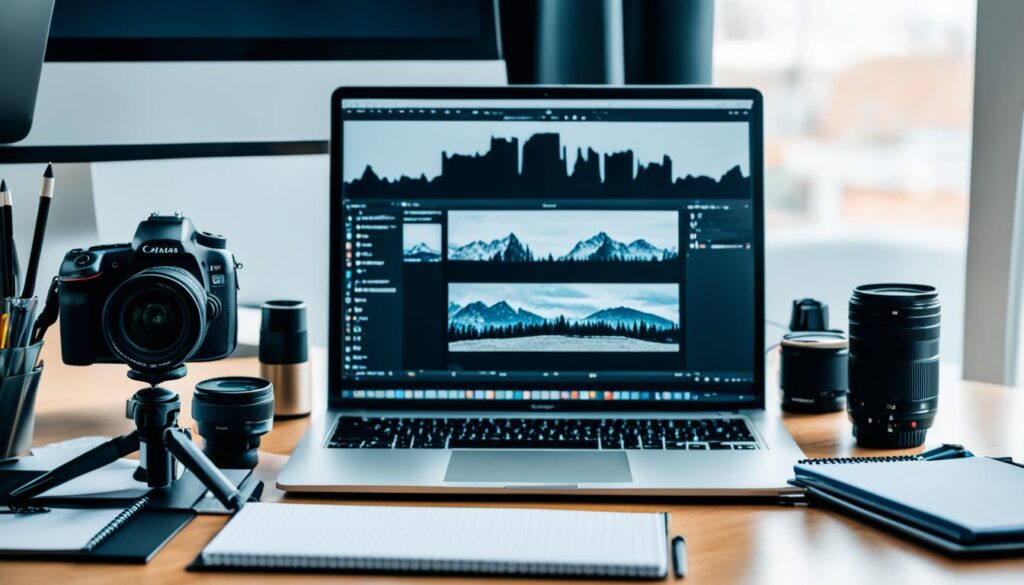
Investing time in search engine optimization (SEO) can greatly enhance your online visibility and attract potential clients. By optimizing your website and blog content with relevant keywords, you can increase your rankings on search engine results pages and drive organic traffic to your photography business.
Networking is another powerful tool for marketing yourself as a photographer. Attend industry events, join photography associations, and collaborate with other professionals to expand your network and gain exposure. Don’t underestimate the power of word-of-mouth referrals and positive client testimonials in building your reputation.
As an entrepreneur, it’s important to continually adapt and evolve your business. Stay up to date with the latest trends and techniques in photography, invest in ongoing education and professional development, and regularly assess and adjust your marketing strategies to stay ahead of the competition.
Starting a lifestyle photography business is an exciting endeavour, but it requires dedication, hard work, and a strategic approach. By following these essential steps and leveraging effective marketing strategies, you can position yourself for success in the competitive photography industry.
Networking and Building Connections in the Photography Industry
Building a strong network and establishing connections with professionals in the photography industry is essential for success. Networking provides opportunities for collaboration, learning, and growth. This section will explore two key avenues for networking in the photography industry: internships and collaborating with fashion brands and retailers.
Internships and Assisting Established Photographers
Internships and assisting established photographers can offer invaluable hands-on experience and help expand your professional network. By working alongside experienced photographers, you can learn from their expertise, gain practical insights, and build relationships that may lead to future collaborations or employment opportunities. Internships also allow you to showcase your skills and work ethic, leaving a lasting impression on industry professionals.
“Internships and assisting established photographers offer invaluable hands-on experience and expand your professional network.”
When searching for internships, consider contacting local photography studios, agencies, or professional organizations in your area. Look for opportunities to shadow or assist photographers who specialize in lifestyle photography. Additionally, volunteering for industry events or workshops can provide exposure to influential photographers and industry leaders.
During your internship or assisting role, be proactive, show initiative, and actively participate in projects. Build strong relationships with your colleagues and utilise networking opportunities at industry events or client meetings. Remember, networking is not just about making connections; it’s about nurturing those connections and maintaining professional relationships over time.
Collaborating with Fashion Brands and Retailers
Collaborating with fashion brands and retailers can strategically expand your network and elevate your portfolio. By working with established brands, you can gain exposure to a larger audience and establish credibility in the industry. Collaborations allow photographers to showcase their unique style and vision while aligning with the brand’s image and target audience.
To initiate collaborations with fashion brands and retailers, start by researching and identifying brands whose aesthetics and values align with yours. Reach out to them with a well-crafted proposal highlighting your portfolio, creative ideas, and how the collaboration can benefit both parties involved. Social media platforms, industry events, and networking platforms can also serve as avenues for connecting with potential collaborators.
When collaborating, maintain clear and open communication with the brand’s representatives. Be prepared to negotiate terms, discuss project objectives, and establish a timeline for deliverables. Prepare a detailed contract outlining both parties’ rights and expectations to ensure a mutually beneficial collaboration.
Collaborating with fashion brands and retailers enhances your portfolio and opens doors to future opportunities and referrals. These partnerships can provide exposure, increase your industry visibility, and ultimately contribute to your success as a lifestyle photographer.
Optimising Shooting Techniques: From Natural Light to Camera Settings
When it comes to capturing stunning lifestyle photographs, having a solid grasp of shooting techniques is essential. This section will explore optimising shooting techniques, including working with natural light, understanding camera settings, and utilizing composition techniques to enhance your images.
Working with Natural Light
One of the most important aspects of lifestyle photography is mastering natural light. Unlike studio lighting, natural light provides your images a unique and organic quality. Here are a few tips to optimize your use of natural light:
- Take advantage of the golden hour: The golden hour, which occurs during the first and last hour of sunlight in a day, offers beautiful soft and warm lighting. Schedule your shoots during this time for stunning results.
- Consider the direction of light: Pay attention to the direction of the light source and how it interacts with your subject. Side lighting can create dramatic shadows, while backlighting can create a halo effect.
- Use diffusers and reflectors: Diffusers help to soften harsh sunlight, while reflectors bounce light onto your subject, filling in shadows and adding depth.
Understanding Camera Settings
A solid understanding of your camera settings is crucial for achieving the desired look in your lifestyle photographs. Here are some key camera settings to consider:
- Aperture: Adjusting your aperture allows you to control the depth of field in your images. A wider aperture (lower f-number) creates a shallow depth of field, while a narrower aperture (higher f-number) increases the depth of field.
- Shutter speed: The shutter speed determines when the camera’s sensor is exposed to light. A faster shutter speed freezes motion, while a slower shutter speed creates motion blur.
- ISO: ISO controls the sensitivity of the camera’s sensor to light. A higher ISO allows for shooting in low-light conditions but may introduce more digital noise to the image.
Utilizing Composition Techniques
Composition plays a significant role in the overall impact of your lifestyle photographs. You can create visually appealing and engaging images by applying different composition techniques. Here are a few composition techniques to consider:
- Rule of thirds: Divide your frame into a grid of nine equal sections using two horizontal and two vertical lines. Place key elements of your composition along these lines or at the intersections to create balance and visual interest.
- Leading lines: Use natural or man-made lines in your environment to lead the viewer’s eye towards the main subject of your photograph. This technique adds depth and guides the viewer’s attention.
- Frame within a frame: Incorporate elements in your scene that naturally frame your subject. This could be a doorway, window, or any other object that forms a frame around your subject, adding depth and context to the image.
By optimizing shooting techniques such as working with natural light, understanding camera settings, and utilizing composition techniques, you can elevate the quality and impact of your lifestyle photographs. Experiment with different approaches, practice consistently and develop your unique style to capture breathtaking images.
Nurturing Client Relationships and Delivering Exceptional Service
Building strong client relationships and delivering exceptional service are key to success in the lifestyle photography industry. As photographers, it is essential to prioritize the satisfaction and needs of our clients. By providing exceptional service, we create a positive experience for our clients and cultivate long-term relationships that can lead to referrals and repeat business.
Anticipating Client Needs and Crafting Personable Experiences
One of the most effective ways to deliver exceptional service is by anticipating the needs of our clients. We can tailor our photography services to their specific requirements by understanding their preferences, goals, and vision. Whether suggesting locations, recommending outfits, or providing guidance on poses and props, anticipating client needs shows our commitment to going above and beyond.
Additionally, crafting personable experiences is essential in connecting with our clients. By getting to know them personally, we can establish trust and rapport, making them feel comfortable and valued. This can be achieved through friendly conversations, active listening, and genuine interest in their stories and interests.
Capturing the Essence of the Client’s Vision
A vital aspect of delivering exceptional service and satisfying our clients is capturing the essence of their vision in our photographs. When clients choose us as their lifestyle photographers, they entrust us with bringing their ideas and dreams to life. By understanding their vision, whether a specific theme, mood, or style, we can tailor our approach and creative choices to create images that truly embody their desires.
Through effective communication and collaboration, we can work closely with our clients to capture the emotions, moments, and details that are important to them. By actively involving them in the creative process and seeking their input and feedback, we ensure that the final result aligns with their vision and exceeds their expectations.
Post-Production: Retouching and Editing for a Cohesive Look
Once you’ve captured your lifestyle photographs, it’s time to take them to the next level through post-production. This crucial step involves retouching and editing your images to achieve a cohesive look and enhance their visual impact. You can refine your photos and create a polished final product with the right techniques and considerations.
Regarding retouching, balancing enhancing the image and maintaining its authenticity is important. The goal is to refine the composition, colours, and details while preserving the scene’s natural essence. Use selective adjustments to enhance specific areas of the photo, such as adjusting the exposure, contrast, and saturation to create a balanced and visually appealing image.
Additionally, editing plays a significant role in creating a cohesive look across your entire body of work. Consistency in colour grading, tonal range, and style will give your portfolio a professional and polished appearance. Experiment with different editing techniques and presets to find a look that suits your aesthetic and helps you tell a story through your images.
Effective post-production relies on software and tools commonly used in the industry. Adobe Photoshop and Lightroom are popular choices among photographers for retouching and editing. These powerful tools offer many features and functionalities to transform your images and achieve the desired cohesive look.
Remember, post-production should enhance your photos, not completely alter them. Strive for a balanced approach, allowing the essence of your original capture to shine through while enhancing the overall visual impact.
| Techniques | Considerations | Software and Tools |
|---|---|---|
| Selective adjustments | Preserving authenticity | Adobe Photoshop |
| Colour grading | Creating a cohesive look | Adobe Lightroom |
| Editing techniques | Refining composition and style |
Conclusion
In conclusion, becoming a successful lifestyle photographer requires skill, dedication, and continuous learning. Throughout this article, we have explored the various aspects of lifestyle photography, from understanding the role of a lifestyle photographer within the fashion industry to cultivating your skills in capturing candid shots. We have discussed the importance of building a unique style and creating a portfolio that speaks volumes about your vision as a photographer.
Measuring success as a lifestyle photographer goes beyond just the number of clients or projects. It is about your work’s impact on others and the satisfaction you derive from pursuing your passion. Continuous learning and adapting to the ever-changing photography industry are key to staying relevant and pushing the boundaries of your creativity. Remember to embrace new techniques, technologies, and ideas as you embark on your photography journey.
Photography is an art that requires constant growth and evolution. By honing your skills, networking with industry professionals, and delivering exceptional service to your clients, you can pave your way to a successful and fulfilling career as a lifestyle photographer. So, keep learning, experimenting, and capturing the beauty of real-life moments through your lens.
FAQ’S
Q: How can I become a lifestyle photographer?
A: To become a professional lifestyle photographer, you can start by learning the basics of photography and then specializing in lifestyle photography. Building a strong portfolio and networking with other professionals in the industry can help you get started with lifestyle photography.
Q: What are some tips for shooting better lifestyle photos?
A: When shooting lifestyle photos, it’s important to slow down and focus on telling a story through your images. Pay attention to details, interact with your subjects to capture genuine moments, and use natural light whenever possible to create a more authentic look.
Q: What does success look like in lifestyle photography?
A: Success in lifestyle photography can be defined by capturing moments that resonate with the audience, evoke emotions, and effectively communicate a story or a lifestyle. Building a strong reputation as a lifestyle photographer and having your work recognized and appreciated by clients and the photography community are also indicators of success.
Q: How can I improve my lifestyle photography skills?
A: Consider taking workshops or courses specific to lifestyle photography to improve your lifestyle photography skills. Practice regularly, experiment with different styles and techniques, seek feedback from other photographers, and always strive to evolve and refine your skills.
Q: What is the importance of storytelling in shooting lifestyle photos?
A: Storytelling is a crucial element in lifestyle photography as it helps create a narrative and evoke emotions in the viewer. By telling a story through your images, you can engage your audience, add depth to your photos, and create a more impactful visual experience.
Q: What are some key elements to focus on during a lifestyle photography shoot?
A: During a lifestyle photography shoot, it’s essential to pay attention to the location, lighting, composition, styling, and directing your subjects. Creating a comfortable and relaxed atmosphere, capturing genuine moments, and balancing posed and candid shots are also important.
Q: How can I get my foot in the door in the world of lifestyle photography?
A: Getting your foot in the door in lifestyle photography involves building a strong portfolio, networking with other industry professionals, and actively seeking opportunities to showcase your work. Collaborating with brands, agencies, or publications can also help you gain exposure and establish yourself in the field.


